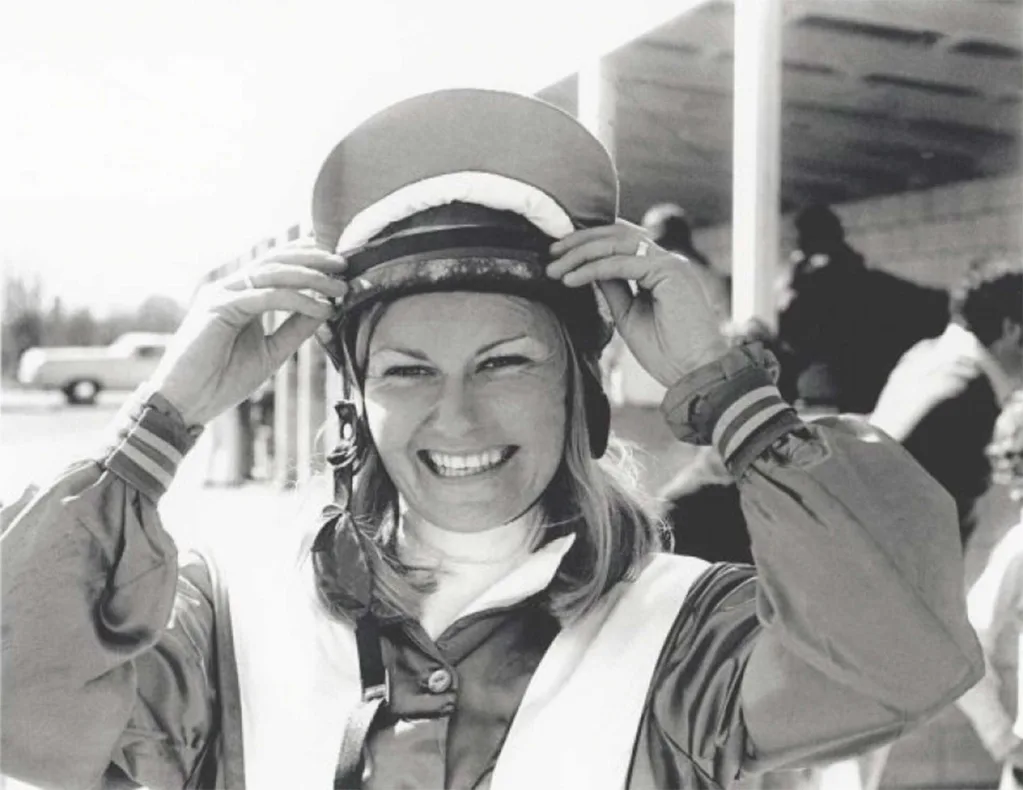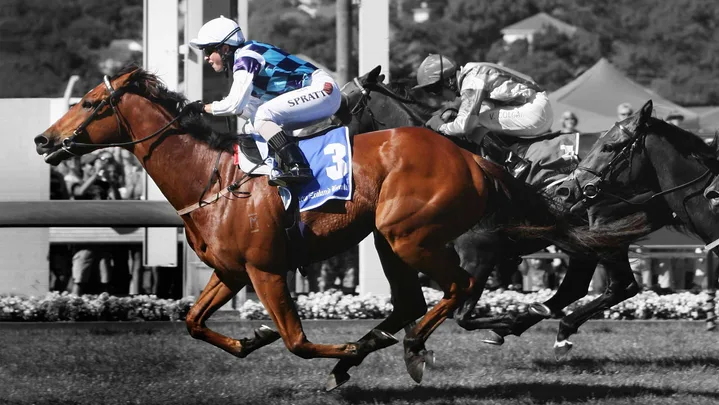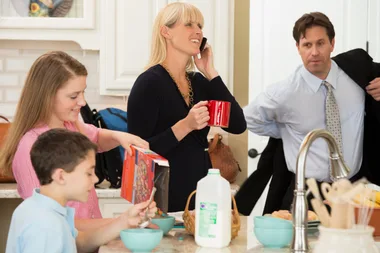It’s 40 years since Kiwi women were granted the right to don jockey’s silks and ride alongside men in the fiercely competitive world of horse racing. We talk to two of our pioneer female riders and two modern jockeys about life on and off the track and, for one of them, the tragedy that almost ended her career.

Linda Jones
Linda Jones
When 24-year-old Linda Jones applied for a jockey licence, she was told she was too old, not strong enough and would take the livelihood off a male jockey.
Oh, and she was married. It was 1972 and women were still banished to what was called the Powder Puff Derbies – women-only races with no betting.
Six years later, in 1978, Sue Walsh had her horse pushed into the barrier during a race by a competing male jockey, in protest at her racing alongside men.
Forced to hold their own in the male-dominated and extremely anti-female industry that was New Zealand racing in the 1970s, Linda and Sue’s love of horses and the pair’s persistence led them to be part of the movement that revolutionised New Zealand racing.
When we lagged behind other nations in granting female riders jockey licences, Linda fought for change. Where women were seen as not good enough and not strong enough to keep up with male counterparts, Sue set out to prove them wrong.
They were pioneers. Nowadays, thanks in part to Linda and Sue, New Zealand has the highest proportion of female jockeys and apprentice jockeys in the world.
So what is life like for women jockeys now? We talked to four of New Zealand’s greatest female riders from past and present to find out how the racing industry has changed and how they had to fight to be the best.
Linda Jones was never going to let the racing industry tell her she couldn’t ride alongside men.
“Back in my day, women weren’t allowed to ride in trials, but I actually rode in a few – I entered under the name L. Jones and I got away with it. Well, for a couple of rides, until I won. The district committee figured out I was a woman and immediately put a ban on female riders in those trials.”
The now 65-year-old was a constant thorn in the side of racing officials as she continued to challenge the industry’s stand against female jockeys.
“In 1975, I got invited to ride in Brazil, in the World Series, and there were only the Australian girls and me who couldn’t ride against men in our own countries. When I returned home I said to Alan, my husband, ‘I want to be a jockey!’ So then I applied to the New Zealand Racing Conference to become an apprentice.”
It was a decision that would turn Linda into a media sensation by leading the campaign for gender equality in the racing industry. While she says her reasons were selfish, they paved the way for other female jockeys to make their mark.
“I believed I could do it and, having ridden in those ladies’ races and worked for all those years, I believed I deserved a crack at it,” Linda says.
“There were times when I thought we were hitting our heads against a brick wall. But when I had a rough time, Alan would say, ‘No, we are determined to keep going.’”
It was a battle though. “I used to get hate mail and receive phone calls telling me to stay home and not ride. Some of it was actually from the wives of the jockeys I was fighting to race against. Surprisingly, women were the most anti me doing it. I’ve always wondered why,” she says.
Linda says even her husband, a well-respected jockey in the industry, had trainers approach him and tell him they would never put Linda on their horses for a race.
“It’s satisfying to know that a few months later, after they had seen my success, some of the trainers changed their tune. Then they were asking me to ride their horses! I basically let my riding do the talking.”
Political pressure mounted over Linda’s fight to race and finally the bill was passed in 1977 and women could no longer be refused licences. Ironically, Linda was not the first female to compete against men in a betting race, because she was pregnant with her daughter Clare at the time.
Linda’s racing career was short-lived – only nine months – but notable for its success. Her first race against men was at Matamata in 1978, and just a week later she rode a winner at Te Rapa, which set in motion her sequence of historic firsts.
She was the first female rider in the North Island to take home first place. She went on to ride four winners in a day, the first woman to do so in Australasia. She was also the first woman to win a Group Race, the first to win at Ellerslie and the first woman in the world to win a derby.
“When women first started racing we didn’t have changing facilities. I got changed in the control room, which controlled the lights to the track. It never worried me. I would get changed in ambulance rooms and all sorts of places without fuss because I was grateful to finally be able to race!”
However, Linda says a policy change didn’t mean she was automatically accepted by everyone – something she was reminded of in 1990, when she was the first woman to be awarded an MBE for racing achievements.
“When I received the MBE, some of the jockeys actually put out a petition to say that I wasn’t worthy to have that.”
Despite her successful career, the mother-of-two says she is glad her daughter didn’t follow in her footsteps.
“It’s pretty tough; I’ve had a lot of injuries. I’ve broken my neck, my jaw, and many other injuries. It’s a pretty dangerous sport, so I was pleased that Clare didn’t really want to ride. If she wanted to I would’ve supported her, but I’m pleased she chose not to. She is still very involved in the industry, having married trainer Michael Hawkes, and lives in Sydney.”
Now living on the Sunshine Coast, Linda and her husband are semi-retired and train a few race horses.
She has been inducted into the New Zealand Sports Hall of Fame and is the first woman to be inducted into the New Zealand Racing Hall of Fame.
She says she will always be proud of how far New Zealand has come for a small country.

Sue Walsh swapped jockeying for horse training, but not before she became the first female to ride a winner.
Sue Walsh
These days New Zealand’s female jockeys can hold their own anywhere, says Sue Walsh.
“Women are well and truly accepted now. Without the girls riding we probably wouldn’t even have enough riders in the industry,” she says.
Riding under her maiden name, Day, Sue galloped into history books as New Zealand’s first female jockey to ride a winner at a totalisator meeting, a week after her debut in 1978.
“Nowadays a girl goes out there on the track and nobody looks twice. When I first started racing, it was this huge novelty, and a lot of people weren’t thrilled about it. I have great admiration for [current top Kiwi] riders like Danielle Johnson and Lisa Allpress – they’ll turn up to any race meeting and be just as competitive as their male counterparts.”
Sue left her apprenticeship six months out from finishing, pursuing what she believed to be a more rewarding career training race horses. Now running a training facility in Foxton with her partner, Bruce Gregory, Sue says she finally realises the importance of being the first New Zealand woman to ride a winner.
“I actually wasn’t that proud of myself at the time. I don’t think I quite realised the gravity of the achievement. I now feel proud of the fact that it has led to opportunities for so many other female jockeys.
“Records are made to be broken, but that is one that can never be broken. No one else can ever be the first, and that is quite satisfying.”
Sue says it has always been in her nature to fight back against people who told her she couldn’t do things.
“At the time, the main excuse people used for not letting women ride was that they were not strong enough. It’s since been proven wrong, but at the time I felt I needed to prove people wrong. Us girls were considered strong enough to ride race horses for track work, so if a girl is game enough and wants to do it, why shouldn’t she race?”
While she didn’t receive many pats on the back from male jockeys back then, she is glad the industry has grown to celebrate female riders.
“Now women can make a proper career out of racing. They can race, then go and have their children and get married, and come back and carry on.”
The Foxton horsewoman says she hopes more people start appreciating the racing industry, as she worries that the shortage of riders could be detrimental to it.
“There aren’t enough people who understand what the racing industry is all about and where it can take you. We need to get our top riders out there into the public, get them to do charity work and visit schools and educate people about what they do.
“People don’t realise the camaraderie, the lifelong friendships and the income they can get in the racing industry. The places they can travel. The possibilities of where they can end up are endless,” she says.

Sam Spratt
Sam Spratt
She is one of the country’s top jockeys, but just a few years ago Sam Spratt thought she’d never ride again after a fall that left her with life-threatening injuries.
“I was so lucky I didn’t break my neck,” she says of the accident that almost ended her racing career.
“It was during a race, and the horse I was on jumped the running rail and I was catapulted off.”
While Sam doesn’t remember the fall, she has watched footage of herself being thrown head first into a stack of barbed wire. She was airlifted to Auckland Hospital, where she would spend months recovering from a serious brain injury.
“I struggled to come to terms with my injury. I think maybe the trauma of everything made me lose the plot a little bit. I kept trying to run away from hospital. Eventually I went home and spent months in rehab for my injuries. I suffered significant memory loss.
“To be perfectly honest, a lot of my memory for a year after the fall is a complete blank.
“Trackside [broadcasting station] did a story on me about three months after my fall but I don’t remember doing the interview. I’ve watched it so I know it happened, but if I hadn’t, I wouldn’t know I’d done it.”
Sam was determined to return to the career she loved. Despite being advised against it by doctors, she tried to make a comeback a few months after her fall. She was thrilled to be back on the track, but her return would be cut short.
“I suffered quite bad depression after my accident. I was young and struggling to come to terms with what had happened to me. I just couldn’t handle the pressure of race-day riding. I only rode a handful of meetings and I would just take off crying.”
When she was then kicked by horse, rupturing her spleen, she was forced to face facts and admit that her career as a jockey might well and truly be over.
She hung up her boots once again, with no intention of ever returning to her riding career, but four years later she was back and the 32-year-old is now one of the country’s top jockeys.
“I’ve grown up loving horses and racing, and I think when you’ve loved something so long, it’s hard for the fear of falling to outweigh that love,” says Sam, who only discovered racing when her brother got a part-time job at the Ellerslie race track in Auckland.
Sam would tag along and work some of the horses.
“It was almost fate. I fell into it at an age that was the perfect time to start,” she says.
Sam was the first female apprentice jockey her trainer at the time had ever taken on.
“Everyone was giving him a bit of stick when he took me on because apparently before me he was a little bit anti female riders.”
In the 15 years she has been in the industry, Sam has noticed a significant shift in the way female riders are treated. Where once she might have seen one female on race day, she says sometimes female riders now outnumber the men. And having recently done a six-month stint in England, where she competed in a few races, she knows just how fortunate female riders are here.
“They were very anti females over there [in England]. I had a few rides and I got put in a boiler room out back. It was basically a cleaning cupboard and that was my female jockey’s room,” she laughs.
“It is quite different. We are definitely given a really good go in New Zealand and it can be easy to forget how far the racing industry has come. New Zealand’s got some damn good female jockeys and I think that comes from the fact that we are given the opportunity to succeed.”

Danielle Johnson
Danielle Johnson
Top Kiwi jockey Danielle Johnson reckons without female riders, New Zealand’s racing industry probably wouldn’t exist today.
Danielle, who is currently in the top three of the NZ national premiership, has had only positive experiences as a female rider and says she has people like Linda Jones and Sue Walsh to thank.
“I take my hat off to them because racing is hard even without that sort of struggle and resistance.”
Danielle grew up around horses and had always thought about being a jockey, something Linda and Sue had never considered a possibility when growing up.
“My brother and I had our first pony when we were barely walking. My dad was a jockey and I kind of followed in his footsteps, and my mum pre-trains race horses. I think horse racing has been in my blood from day one,” she says.
The five-foot-one jockey started her four-year apprenticeship when she was 16 and juggled lessons with 4.30am wake-ups to gallop the horses.
“Being an apprentice is quite demanding; you have to wake up very early every day and ride the horses at the track, and your time is taken up by trials and races,” she says. “When you’re young you’ve got a lot of energy to handle that.”
Now, as a full-time jockey, the 26-year-old says no two days are the same. “Our schedule isn’t nine to five. It’s so flexible and varied. If I’m needed at the track, my day starts at around 4.30am to do gallops. Other days, however, I might not be needed at all and it’s nice to get a break on those days.”
She admits that not many people know what goes into being a jockey.
“The funniest thing people ask me, particularly when I’m flying to other parts of the country for a race, is how my horse gets to the race. I always feel people are disappointed when you tell them we actually ride other people’s horses. They don’t realise that with our busy schedule it’s often too hard to have your own horse. I honestly couldn’t justify having more horses. I don’t have enough time to give them the attention they need.”
She also admits that while people are fascinated with what she eats to keep her weight down, she doesn’t stick to a strict diet.
“It can be quite taxing for jockeys who have to constantly watch their weight. I’m naturally light, but a lot of boys and some girls have to work really hard to be light enough.”
Danielle says dedication is the key to being successful in racing and it’s the thing she admires most about her father, former top jockey Peter Johnson.
“I’m most proud of my dad’s determination. He was not a lightweight jockey whatsoever and he worked so hard; he would have a sweat most nights to lose weight.”
Jockeys can spend long periods of time in saunas wearing heavy clothes, she explains, as sweating helps them shed extra kilos before a race.
“You have to be passionate about racing and enjoy the battle on the track to be able to do what jockeys do. I have a very competitive nature and there is nothing better than winning a race on a horse that shouldn’t be good enough to do so. That means I’ve done my job to the best of my ability,” she says.
The ambitious rider says she finds it hard to believe that just a generation ago women weren’t allowed to race, while today New Zealand racing sits ahead of the world in gender equality.
“One of the great things about New Zealand racing now is the opportunities female jockeys have, whereas [female jockeys] probably still struggle to be accepted at the top level in Australia and other countries around the world,” Danielle says.
“What I love about being a jockey is that every day I get to work with horses – I love horses – and I’m winning races, making money doing something I love.”



